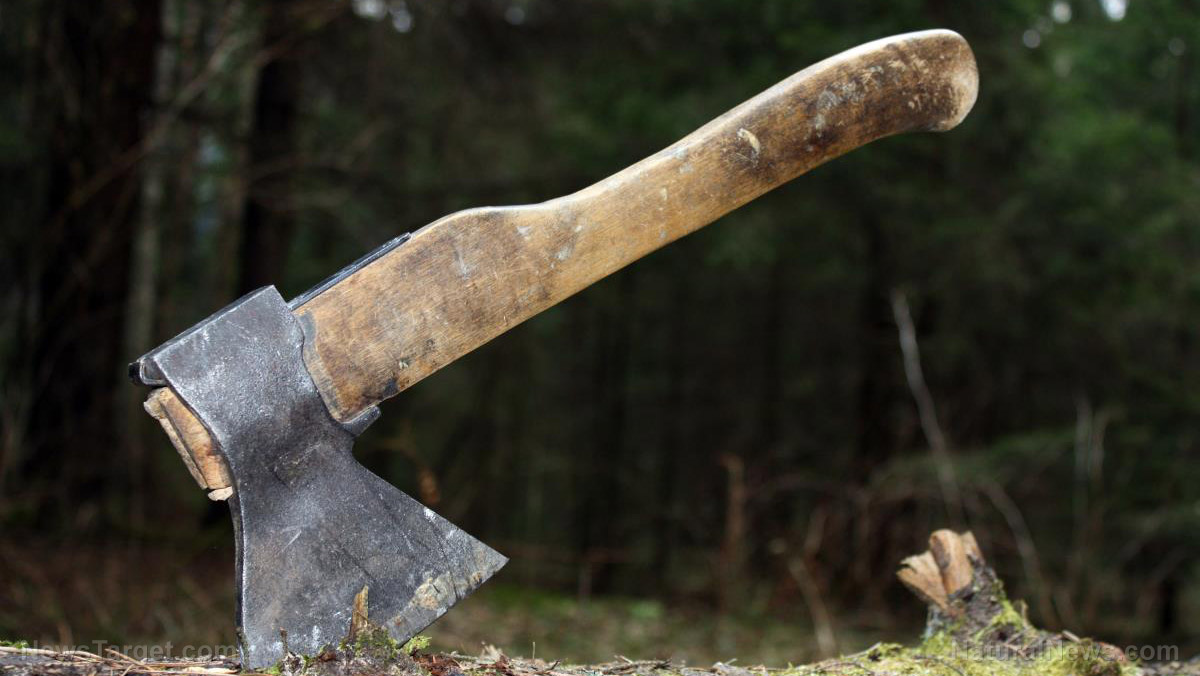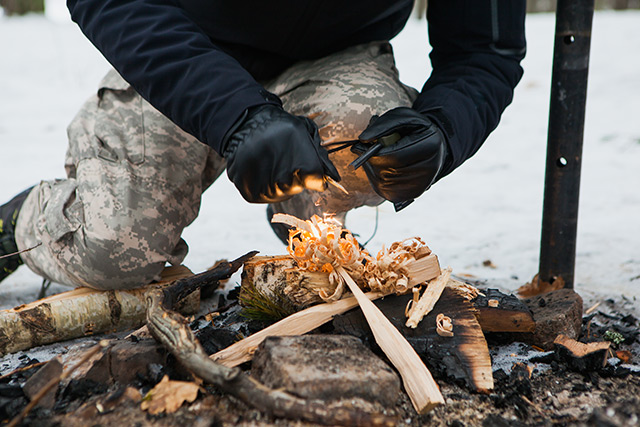Off-grid waste management: Taking care of your personal business when society collapses
08/21/2018 / By Zoey Sky

Food supplies and survival gear are crucial to prepping, and only a handful of people forget them. However, not enough preppers prioritize off-grid waste management, which is just as important.
When you decide to live off-grid or if you are forced to evacuate, you become responsible for the sanitation of your shelter. Don’t let the seemingly difficult task discourage you. With enough preparation, you will figure out how to properly manage waste.
After you set-up whatever option you decide on, you simply need to maintain it when SHTF. Since you will have to build this on your own, you can go with a mobile and temporary privvy or a sturdier and stationary latrine. (h/t to PreppersWill.com.)
Temporary latrines
If you’re going camping or if you need to evacuate due to a disaster scenario, you can use a plastic five-gallon bucket as a temporary latrine. You can use a hollow pool float noodle to make the bucket comfortable to sit on.
Just take a pool float noodle and cut it so it fits the rim on top of the bucket. Cut a straight line down one side right up to the hole in the middle. Finally, slide the pool float noodle over the rim of the bucket.
You can also cut the bottom of the bucket out, and place it over a hole that you’ve dug. Bury the waste properly or line it with heavy duty bags and change it out regularly. Don’t bury waste near a water source or your main camp, which is where you cook and rest.
Pit latrines
A pit latrine or old-fashioned outhouse is a deep hole with a floor slab over it. The slab has a circular hole cut out for a squat or seated toilet, which has a shelter around it.
Some safety measures to consider include:
- Not digging a latrine uphill from a water source. A latrine must be two yards above the water table and the flood table. You must also keep it about fifty yards away from your water source.
- Always seal off the outhouse and latrine hole when not in use.
- The pit must be at least five feet deep, with a width of about four feet.
Since pit latrines may be in use 24/7, it will be at the mercy of the elements. Don’t set it up too far away from your living quarters.
Don’t smoke near the latrine. While human waste is breaking down, it produces methane, an explosive gas. This will explode when exposed to cigarette smoke.
You can use organic material like hay, lime, peat moss, and other organic materials to help reduce the smell and flies produced by a latrine pit. However, you can’t get rid of the smell using household cleaning chemicals because this can cause a chemical reaction. (Related: Cleaning and disinfecting off-grid: What products to stockpile and how to use them.)
Composting toilet
The composting toilet, or dry/humanure toilet, is different from a pit latrine. You can use a composting toilet to turn waste into compost.
A humanure toilet will take waste and dry materials and compost it with straw at high heat. This eliminates pathogens, or infectious biological agents that spread disease or illness to a host.
A composting toilet, which can be as simple as a bucket, needs at least several inches of cover material, like sawdust, in the bucket. To “flush” a composting toilet, you will cover all the waste with some cover material like crushed leaves, peat moss, or wood ashes.
Once the composting bucket is full, take it out to an outdoor compost bin. When building up compost in the outdoor bin, use a lot of straw to minimize carbon/nitrogen levels. The compost must cure for a year. If you want to use compost on your vegetable garden or other edibles, the compost must reach a temperature of 122 degrees for around one whole week. This way, any potential pathogens will be completely eliminated.
If you have toilet paper, it can help offset the liquids and hasten the composting process of the humanure toilet. With the right cover materials, the compost toilet won’t have any smells.
If you don’t have any toilet paper, you can use several substitutes to keep yourself clean once you’re done using the toilet:
- Cloth wipes – This requires cutting square pieces of cloth.
- Green sagebrush – Keep some green sagebrush in an airtight container to soften it. Leave the container by the toilet. Green sagebrush has a sweet smell and natural oil-like content.
- Moss
An off-grid toilet setup has another benefit: It has less impact on the environment. For example, it doesn’t require a lot of water for flushing.
Consider these off-grid options if you’re roughing it as a prepper or if you need eco-friendly waste disposal options.
Read more articles with tips for proper waste management when SHTF at Preparedness.news.
Sources include:
Tagged Under: Collapse, disaster, emergencies, Homestead, homesteading, off grid, preparedness, prepper, prepping, prepping tips, sanitation, self sufficiency, self-reliance, self-sustainability, SHTF, survival, survival skills, Survival Tips, survivalist, Waste disposal, waste management



















